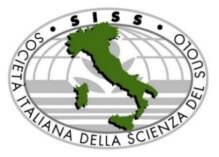Potential salinization of tropical soils formed from basement complex and sedimentary parent materials by sole and combined dried animal manures and wood ash
DOI:
https://doi.org/10.6092/issn.2281-4485/21147Keywords:
salinization, complementary application, wood ash, nutrient uptake, basement complexAbstract
The hypothesis that sole and complementary application of dried animal manures and wood ash will affect electrical conductivity (EC) of some tropical soils under controlled and uncontrolled conditions was tested. Treatments: control, poultry manure at 90 kg P ha-1 (PM), cattle manure at 90 kg P ha-1 (CM), wood ash 5 t ha-1 (WA) and the mixtures of manure with wood ash (CMWA, PMWA) were applied to soil in incubation, screen house and field experiments. Samples were taken monthly (0, 4, 8, 12 weeks after incorporation/planting; WAI/WAP) for soil EC determination. For screenhouse and field experiments, maize seeds were sown in two cycles. Data on soil EC were analyzed and significant means separated. Result indicated that EC of soils were in the sequence of Soil 1 (0.16) > Soil 2(0.13) > Soil 5 (0.12) > Soil 4 (0.08) > Soil 3 (0.05) > Soil 6 (0.02 dS m-1). For amendments, the EC was in the order of WA (4.39) > PMWA (3.03) > CMWA (2.78) > PM (1.87) > CM (1.43 dS m-1). In incubation experiment, application of CMWA increased EC by 126, 65, 79 % above control, CM and PM respectively in Soil 1 at 0WAI, by 338, 46, 218, 52 and 133 % than the control, CM, PM, PMWA and WA in Soil 6 at 4WAI, by 279, 77, 130, 66 and 61 % respectively than control, CM, PM, PMWA and WA in Soil 6 at 8WAI, by 67, 74, 188, 114 and 79 % than the control, CM, PM, PMWA and WA in Soil 3 at 12WAI. Salinization potential of the amendments was CMWA > PMWA > WA > CM > PM > Control in the incubation experiment. In the screenhouse experiment, the salinization potential of the amendments was CMWA > CM > WA > PMWA > PM > Control in the both cycles at 0WAP, CMWA > CM > WA > PMWA > PM > Control and WA > PM > CMWA > Control > CM > PMWA respectively in the first and second cycle respectively at 8WAP. In the field experiment, CMWA raised EC by 250, 232, 174, 152 and 174 % in comparison to control, CM, PM, PMWA and WA at 4WAP in the first cycle while a 185, 118, 76 and 118 % rise in EC was recorded above the control, PM, PMWA and WA at 12WAP in the second cycle. The salinization potential of the amendments was in the order of CMWA > CM > PMWA > WA > PM > Control and CMWA > PMWA > CM > WA > PM > Control repectively in the first and second cycle. The salinity of dried animal manures, wood ash and the potential secondary soil salinization induced by their application is greater in CMWA. The intensity of salinization among the soils was time cycle specific, and soils from basement complex parent material were more prone to salinization than soils from sedimentary parent material.
References
ALADE A.A., AZEEZ J.O., AJIBOYE G.A., ADEWUYI S.A., OLOWOBOKO T.B., HUSSEIN S.D (2019) Influence of animal manure mixture on soil nitrogen indices and maize growth. Russian Agricultural Science, 45(2):175–185. http://dx.doi.org/10.3103/S1068367419020022
ALLEN S.C., NAIR V.D., GRAETZ D.A., SHIBU J., RAMACHANDRAN NAIR P.K. (2006) Phosphorus loss from organic versus inorganic fertilizers used in alley cropping on a Florida Ultisol. Agriculture Ecosystem Environment, 117 (4):290–298. http://dx.doi.org/10.1016/j.agee.2006.04.010
ANDERSON R., XIA L.Z. (2001) Agronomic measures of P Q/I parameters and lysimeter-collectable P in subsurface soil horizons of a long-term slurry experiment. Chemosphere, 42:171–8. https;//doi.org/10.1016/s0045-6535(00)00122-3.
ASARE W. (2019) Effects of bone meal on physiochemical soil properties of a fertilized reclamation site in Iceland. United Nations University Land Restoration Training Programme, https://www.grocentre.is/static/gro/publication/736/document/asare2019.pdf
AUGUSTO L., BAKKER M.R., MEREDIEU C. (2008) Wood ash applications to temperate forest ecosystems—potential benefits and drawbacks. Plant Soil 306:181–198. https://doi.org/10.1007/s11104-008-9570-z
AZEEZ J.O., VAN AVERBEKE W. (2012) Dynamics of soil pH and electrical conductivity with the application of three animal manures. Communication in Soil Science and Plant Analysis, 43(6):865–874. http://dx.doi.org/10.1080/00103624.2012.653022
AZEEZ J.O., ALADE A.A., ADEWUYI S., AJIBOYE G.A., OLOWOBOKO, T.B. (2020) Soil Phosphorus Fractions, Reaction, and Conductivity in Some Southwestern Nigerian Soils as Affected by Animal Manure Mixtures. Communication in Soil Science and Plant Analysis, 51(20): 2616-2632. https://doi.org/10.1080/00103624.2020.1845362
BAYU T. (2020) Review on contribution of integrated soil fertility management for climate change mitigation and agricultural sustainability. Cogent Environment Science, 6(1):21 https://doi.org/10.1080/23311843.2020.1823631.
BEDNAR A.J., GARBARINO J.R., FERRER I., RUTHERFORD D.W., WERSHAW R.L., RANVILLE J.F., WILDEMAN T.R. (2003) Photodegradation of roxarsone in poultry litter leachates. Science of the Total Environment, 302:237–245. https://doi.org/10.1016/s0048-9697(02)00322-4
BOLAN N.S., ADRIANO D.C., MAHIMAIRAJA S. (2004) Distribution and bioavail- ability of trace elements in livestock and poultry manure by- products. Critical Review in Environment, Science and Technology, 4:291–338. https://doi.org/10.1080/10643380490434128
BOUGNOM B.P., NEMETE A.M, MBASSA G.F., ONOMO P.E., ETOA F.X. (2020). Effect of Cattle Manure Wood-Ash Compost on Chemical, Physical and Microbial Properties of Two Acid Tropical Soils. Agricultural journal, 15 (1): 13-19. http://dx.doi.org/10.31695/IJASRE.2020.33788
BRADY N.C., WEIL R.R. (1996). The Nature and Properties of Soils. 11th Edn., Prentice Hall Incorporation, Upper Saddle River, NJ., USA., Pages: 739.
BROWN B.L., SLAUGHTER A.D., SCHREIBER M.E. (2005) Controls on roxarsone transport in agricultural watersheds. Applied Geochemistry, 220:123–33.
CHANG C., SOMMERFELDT T.G., ENTZ. T. (1991) Soil chemistry after eleven annual applications of cattle feedlot manure. Journal of Environmental Quality, 20:475–480. https://doi.org/10.2134/jeq1991.004724250020020022x
CLARK M.S., HORWATH W.R., SHENNAN C., SCOW, K.M. (1998) Changes in soil chemical properties resulting from organic and low-input farming practices. Agronomy Journal, 90:662–671. https://doi.org/10.2134/agronj19980002196200900050016x
DAS B.K., CHOUDHURY B.H., DAS K.N. (2013) Effect of integration of fly ash with fertilizers and FYM on nutrient availability, yield and nutrient uptake of rice in inceptisols of Assam, India. International Journal of Advanced Research in Technology, 2: 190-208. ISSN 2278-7763
DE N.S., VAN DE STEENE J., HARTMAN R., HOFMAN G. (2000) Using time domain reflectometry for monitoring mineralization of nitrogen from soil organic matter. European Journal of Soil Science, 51:295–304. https://doi.org/10.1046/ j.1365-2389.2000.00306.x.
DEMEYER A., NKANA J.V., VERLOO M.G. (2001). Characteristics of wood ash and influence on soil properties and nutrient uptake: An overview. Bioresource Technology, 77(3): 287-295. https://doi.org/10.1016/S0960-8524(00)00043-2
DIACONO M., MONTEMURRO M.. (2010) Long term effects of organic amendments on soil ferti- lity: A review. Agronomy Sustainance and Develop-ment, 30:401–422. https://doi.org/10.1051/agro/2009040.
DIKINYA O., MUFWANZALA N. (2010) Chicken manure enhanced soil fertility and productivity: Effects of application rates. Journal of Soil Science and Environmental Management, 1:46–54. http://www.academicjournals.org/JSSEM
DONG J.M., YAO L.Q., ZHANG J.M., FENG J.H., SA R.N. (2001) Feed additive manual (in China). Beijing: China Agricultural University Press.
GARBARINO J.R., BEDNAR A.J., RUTHERFORD D.W., BEYER R.S., WERSHAW R.L. (2003) Environ-mental fate of roxarsone in poultry litter. I. Degradation of roxarsone during composting. Environment Science Tech-nology, 37:1509–14. https://doi.org/10.1021/es026219q
GOFF, J. P. (2006). Macromineral physiology and application to the feeding of the diary cow for prevention of milk fever and other peripaturient mineral disorders. Animal Feed Science Technology, 126:237–257. https://doi.org/10.1016/j.anifeedsci.2005.08.005
INGERSLEV M., SKOV S., SEVEL L., PEDERSEN L. B. (2011) Element budgets of forest biomass combustion and ash fertilisation—a Danish case-study. Biomass Bioenergy 35:2697–2704.http://dx.doi.org/10.1016/j.biombioe.2011.03.018
JACKSON, B.P., BERTSCH, P.M. (2001). Determination of arsenic speciation in poultry wastes by IC-ICP-MS. Environment Science Technology, 35:4868–4873. https://doi.org/10.1021/es0107172
OLOWOBOKO T.B., AZEEZ J.O., OLUJIMI O.O., BABALOLA O.A. (2018) Comparative Evaluation of Animal manures and their ashes on soil pH and electrical conductivity in some Southwestern Nigerian soils. Commu-nications in Soil Science and Plant Analysis, 49(12): 1442-1454. http://dx.doi.org/10.1080/00103624.2018.1464184
ODELANA T.B., BANKOLE G.O., OGUNTADE O.A., AZEEZ J.O. (2024) Sole and complementary effect of animal manures and wood ash on maize production and P uptake in tropical soils. Arabian Journal of Geosciences, 17:308. https://doi.org/10.1007/s12517-024-12117-w
OMEIRA N., BARBOUR E.K., NEHME P.A., HAMADEH S.K., ZURAYK R., BASHOUR I. (2006) Microbiological and chemical properties of litter from different chicken types and production systems. Science of the Total Environment, 367 (1):156–62. https://doi.org/10.1016/j.scitotenv.2006.02.019
PARKER D. (2000) Controlling agricultural nonpoint wa-ter pollution: costs of implementing the Maryland Water Quality ImprovementAct of 1998. Agricultural Economics, 24 (1):23–31. https://doi.org/10.1016/S0169-5150(00)00112-2
EKHOLM P., TURTOLA E., GRÖNROOS J., SEURI P., YLIVAINIO K (2005) Phosphorus loss from different farming systems estimated from soil surface phosphorus balance. Agriculture, Ecosystem and Environment, 110:266–278. https://doi.org/10.1016/j.agee.2005.04.014
PRATT P.F. (1984). Salinity, sodium, and potassium in an irrigated soil treated with bovine manure. Soil Science Society of America Journal, 48:823–828. https://doi.org/10.2136/sssaj1984.036159950480040025x
PURBAJANTI E.D., SLAMET W., FUSKHAH E., ROSYID A (2019) Effects of organic and inorganic fertilizers on growth, activity of nitrate reductase and chlorophyll contents of peanuts (Arachis hypogaea L.), IOP Conference Service Earth Environment Science, 250 (1) https://doi.org/10.1088/1755-1315/250/1/012048
ROBA T.B. (2018) Review on: the effect of mixing organic and inorganic fertilizer on productivity and soil fertility. OALib,5(6):1–11. https://doi.org/10.4236/oalib.110 4618
SAS (1999) The SAS system for windows. Cary, NC: Release 8.0. SAS Inst.
ROY S., KASHEM M. (2014) Effects of Organic Manures in Changes of Some Soil Properties at Different Incubation Periods. Open Journal of Soil Science, 4: 81-86. https;://doi.org/10.4236/ojss.2014.43011.
SINGH L., SUKUL P. (2019) Effects of organic manure, inorganic fertilizers and fly ash on physicaland electrochemical properties of soil under maize cultivation. Plant Archives, 19(2): 2797-2800. e-ISSN:2581-6063
TERESSA D., KIBRET K., DECHASA N., WOGI L. (2024) Soil properties and nutrient uptake of maize (Zea mays) as influenced by mixed manure and blended inorganic fertilizer in Haramaya district, eastern Ethiopia. Heliyon, 10: e35784. https://doi.org/10.1016/j.heliyon.2024.e35784
ZHANG S., ZHU Q., DE VRIES W., ROS G., CHEN X., MUNEER M., ZHANG F., WU L. (2023) Effects of soil amendments on soil acidity and crop yields in acidic soils: a world-wide meta-analysis. Journal of Environmental Management, 345:118531. https://doi.org/10.1016/j.jenvman.2023.118531.
ZHOU D.M., HAO X.Z., WANG Y.J., DONG Y.H., CANG L. (2005) Copper and Zn uptake by radish and pakchoi as affected by application of livestock and poultry manures. Chemosphere 59:167–175. https://doi.org/10.1016/j.chemosphere.2004.11.008
Downloads
Published
How to Cite
Issue
Section
License
Copyright (c) 2025 Toyin Blessing Odelana, Oladele Abdullahi Oguntade, Olubunmi Abosede Odusanya, Ruth Oluwakemi Abifarin-Adegbenro, Jamiu Oladipupo Azeez

This work is licensed under a Creative Commons Attribution 4.0 International License.









